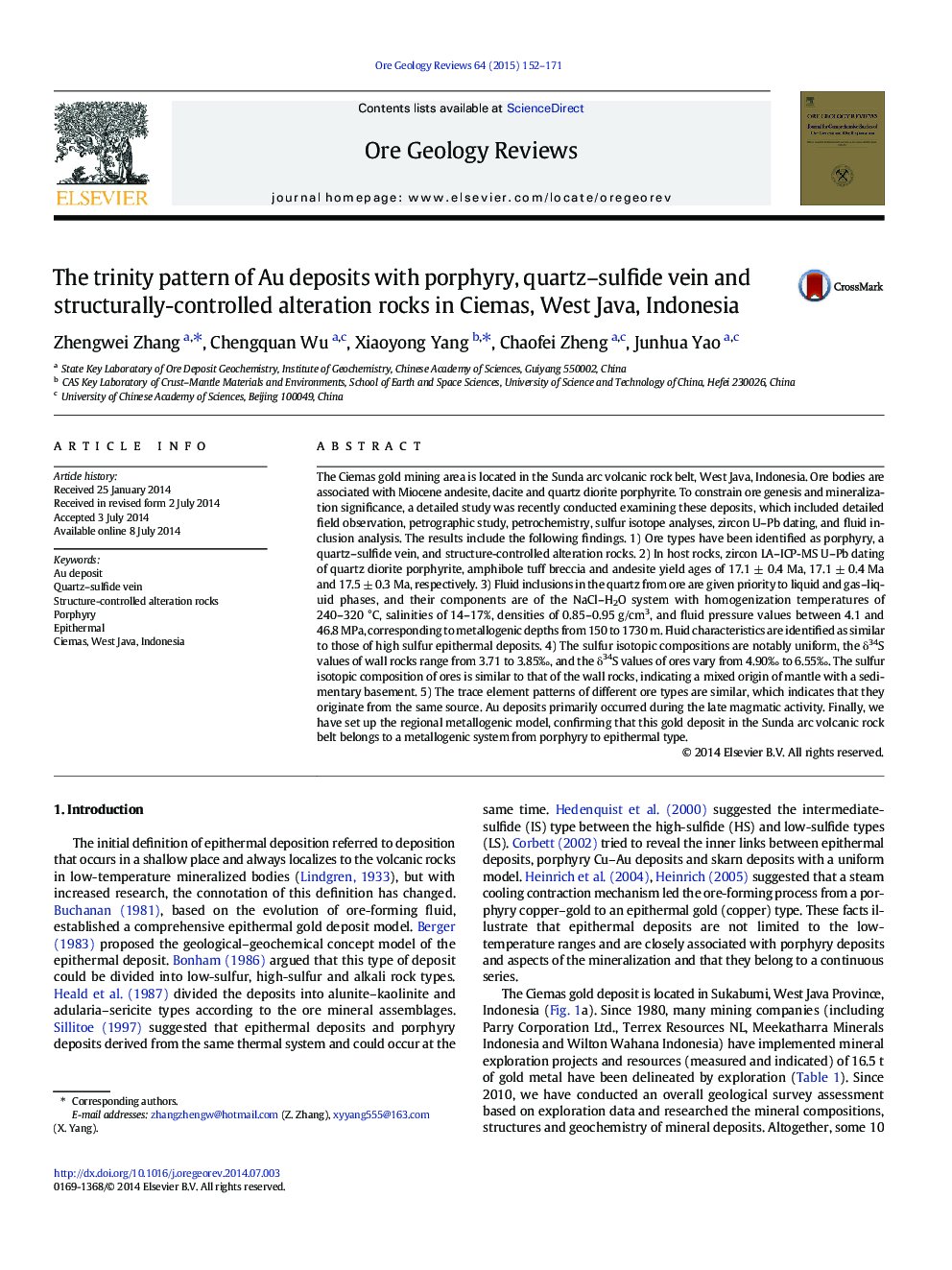| کد مقاله | کد نشریه | سال انتشار | مقاله انگلیسی | نسخه تمام متن |
|---|---|---|---|---|
| 4697101 | 1637239 | 2015 | 20 صفحه PDF | دانلود رایگان |

• Au deposits were associated with the quartz diorite porphyrite occurred at 17–18 Ma.
• Detailed data include petrographic, sulfur isotopic, zircon U–Pb and fluid inclusion.
• Deposits in the Sunda arc volcanic rock belt occur from porphyry to epithermal type.
The Ciemas gold mining area is located in the Sunda arc volcanic rock belt, West Java, Indonesia. Ore bodies are associated with Miocene andesite, dacite and quartz diorite porphyrite. To constrain ore genesis and mineralization significance, a detailed study was recently conducted examining these deposits, which included detailed field observation, petrographic study, petrochemistry, sulfur isotope analyses, zircon U–Pb dating, and fluid inclusion analysis. The results include the following findings. 1) Ore types have been identified as porphyry, a quartz–sulfide vein, and structure-controlled alteration rocks. 2) In host rocks, zircon LA–ICP-MS U–Pb dating of quartz diorite porphyrite, amphibole tuff breccia and andesite yield ages of 17.1 ± 0.4 Ma, 17.1 ± 0.4 Ma and 17.5 ± 0.3 Ma, respectively. 3) Fluid inclusions in the quartz from ore are given priority to liquid and gas–liquid phases, and their components are of the NaCl–H2O system with homogenization temperatures of 240–320 °C, salinities of 14–17%, densities of 0.85–0.95 g/cm3, and fluid pressure values between 4.1 and 46.8 MPa, corresponding to metallogenic depths from 150 to 1730 m. Fluid characteristics are identified as similar to those of high sulfur epithermal deposits. 4) The sulfur isotopic compositions are notably uniform, the δ34S values of wall rocks range from 3.71 to 3.85‰, and the δ34S values of ores vary from 4.90‰ to 6.55‰. The sulfur isotopic composition of ores is similar to that of the wall rocks, indicating a mixed origin of mantle with a sedimentary basement. 5) The trace element patterns of different ore types are similar, which indicates that they originate from the same source. Au deposits primarily occurred during the late magmatic activity. Finally, we have set up the regional metallogenic model, confirming that this gold deposit in the Sunda arc volcanic rock belt belongs to a metallogenic system from porphyry to epithermal type.
Journal: Ore Geology Reviews - Volume 64, January 2015, Pages 152–171